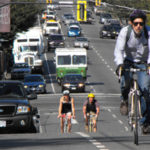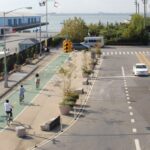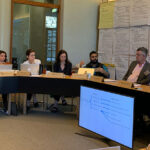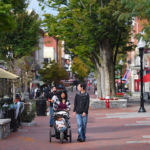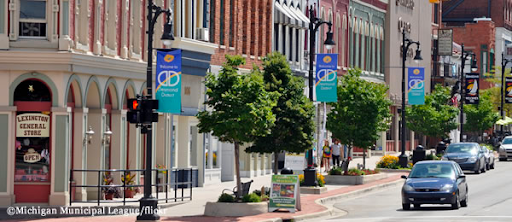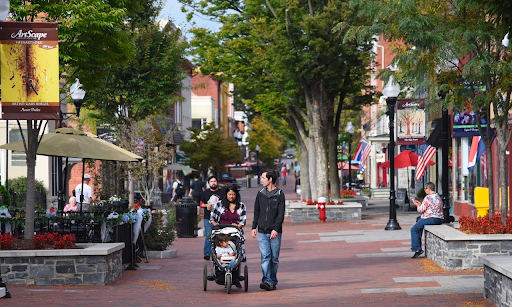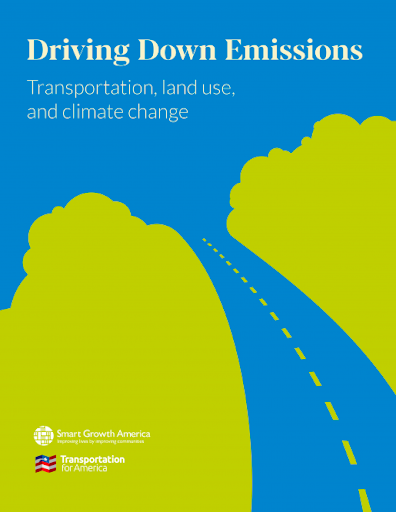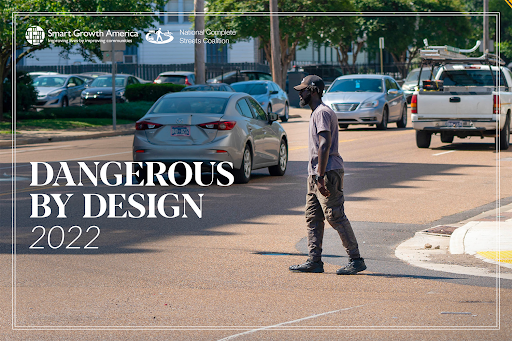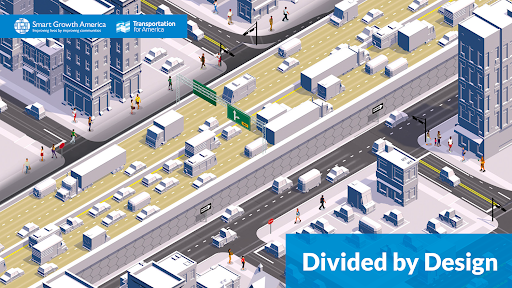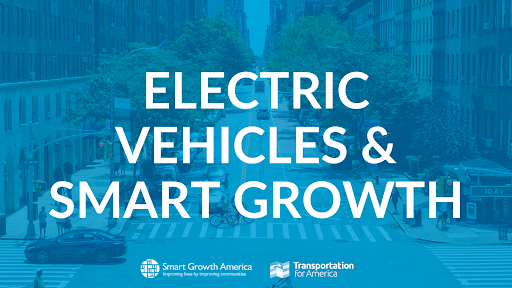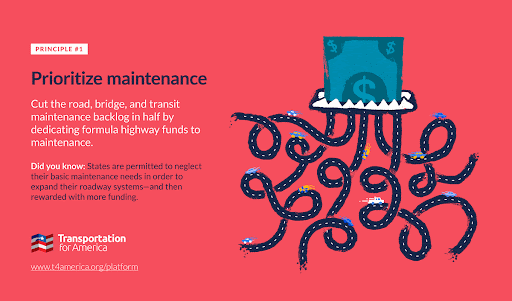Atlantic Avenue on the Brooklyn Waterfront Greenway (Photo by Brooklyn Greenway Initiative)
The Brooklyn Waterfront Greenway in Sunset Park, Brooklyn (Photo by Brooklyn Greenway Initiative)
Brooklyn Waterfront Greenway Map (Photo by Brooklyn Greenway Initiative)
Southwest Brooklyn Corridor of the Brooklyn Waterfront Greenway (Photo by Brooklyn Greenway Initiative)
Aerial view of the Naval Cemetery Landscape (Photo by Ngoc Minh Ngo)
Runners in DUMBO, Brooklyn running along the Brooklyn Waterfront Greenway (Photo by Brooklyn Greenway Initiative)
Cyclists in Jamaica Bay, riding along the Brooklyn Waterfront Greenway (Photo by Brooklyn Greenway Initiative)
The Naval Cemetery Landscape (Photo by Ngoc Minh Ngo)

Brooklyn Greenway
2023 - $15,000 General Operating Support
Brooklyn Greenway Initiative (BGI) is committed to the development, establishment, and long-term stewardship of the Brooklyn Waterfront Greenway – a 29-mile protected and landscaped route for pedestrians and cyclists of all ages and abilities. When complete, the Greenway will connect Brooklyn’s waterfront, parks, and open space, commercial and cultural corridors, and new tech and innovation hubs for 2.65 million Brooklyn residents, over 1.1 million people who work in Brooklyn, and 15 million annual visitors from across New York City and around the world.
Since its founding in 2004, BGI has channeled more than $218 million in public and private investment toward implementation of the Greenway, leveraged public and private investment of $2.38 million toward the creation of the Naval Cemetery Landscape (NCL) as a new park-like space and memorial meadow adjacent to the Greenway, and conceptualized or supported the development and stewardship of other open spaces and public amenities along the Greenway. BGI hosts numerous public events and programs designed to activate the Greenway and NCL, foster critical support and stewardship for this vital public infrastructure, and build awareness and engagement of BGI as the organization dedicated to their long-term care.
Approximately 21 miles of the Brooklyn Waterfront Greenway are currently complete, and expansion projects are underway. While progress is encouraging, planning gaps remain, and resources for the Greenway’s ongoing maintenance and stewardship are severely lacking. New York City’s pandemic bikeboom (in 2020, bicycle use on the Greenway soared 3-5 times from 2019 and pedestrian use doubled) and increasing extreme weather have made it abundantly clear that the Greenway is essential intersectional infrastructure for public health and wellbeing, active transportation, and resiliency against the changing climate.
Due to the work of BGI and their partners, there is strong momentum to advance greenways in Brooklyn and across New York City. To make progress on this work, BGI is focusing on the following programs in 2024.
New York City Greenways Coalition: In 2021, BGI formed the New York City Greenways Coalition, a group of greenway-aligned partners focused on completion and continual enhancement of an equitable greenway network in New York City. The coalition has successfully advocated for a citywide greenways plan, in addition to federally funded greenway corridor planning across New York City. In the fall of 2024, Brooklyn Greenway Initiative is building support to host their second NYC Greenways Summit - a convening of greenway-invested stakeholders across sectors to share expertise on the need for comprehensive planning, implementation, and upkeep of a fully developed greenway network in NYC. Attendees of the summit will receive a greater understanding of New York’s City transportation policy and clear next steps for influencing policymakers to support greenway infrastructure.
Brooklyn Waterfront Greenway Advocacy, Community Engagement, and Stewardship: The Brooklyn Waterfront Greenway still has 8 miles to go to complete its 29 mile corridor from Greenpoint to East New York. In 2024, BGI will continue to build partnerships to advocate for completion and engage communities across Brooklyn in stewardship activities, bike rides, and other activities to increase awareness and use of greenways.
Brooklyn Waterfront Greenway User Study: To improve the greenway and advocate for completion, BGI needs to better understand who’s using it and how. In March 2023, BGI launched a 13-month study to measure use along 29 miles of the Brooklyn Waterfront Greenway. With our project partners, BGI installed 32 computer sensors along the corridor to measure the volume of use and mode of use (pedestrian, bicycle, skateboard, etc.) for 24 hours each day. In 2024, BGI will publish a report of the user study’s findings, along with fieldwork data that will work to inform the forthcoming Greenways Master Plan and the community based planning efforts happening concurrently. In addition to usership, BGI will have data to demonstrate the environmental impacts of the Brooklyn Waterfront Greenway and on reduced vehicle trips and carbon emissions.
Naval Cemetery Landscape Public Space: This 1.7 acre public space, pollinator meadow, and historic site is a place for respite and community on the Brooklyn Waterfront Greenway. Fully operated and funded through BGI and their supporters, the landscape is open year round for visitors and hosts dozens of public programs every year. Located in a community that is lacking in greenspace, It is a unique natural area and peaceful spot that welcomed over 14,000 visitors in 2023. In 2024, BGI will continue to maintain an expanded schedule of stewardship events to engage community volunteers in greening projects. BGI will work to develop dynamic public programs, events, and engagement opportunities with community, nonprofit, and corporate partners to grow in-person public engagement, education, nature, art, and wellness programs at the Naval Cemetery Landscape and on the Greenway.
More information about Brooklyn Greenway Initiative is at: brooklyngreenway.org; and the NYC Greenway Coalition, created and maintained by BGI, is here: greenways.nyc.
brooklyngreenway.org
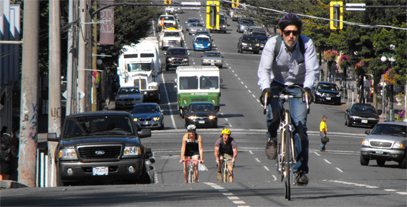
 Alliance for Biking and Walking
2013 - $8,000 Open Streets
2011 - $5,000 General Support
The Alliance for Biking & Walking creates, strengthens, and unites state and local bicycle and pedestrian advocacy organizations in every state, province, and major city in North America. These sustainable organizations are highly respected by the public, media, and policy makers. Their efforts in communities and their united strength at the national level have transformed cities into places where it is easy, safe, desirable and common for citizens to bike and walk.
Open Streets
Open Streets develops a curriculum for a comprehensive three-day open streets training for cities interested in starting or growing initiatives. Open streets (commonly called Ciclovías, Saturday Parkways, Sunday Streets, etc.) differentiate themselves from block parties and street fairs by promoting active living, healthy lifestyle choices and connecting neighborhoods. They are typically part of a broader effort to encourage sustained physical activity, redefine public spaces and increase healthy transportation options. By opening the streets to people, residents view and connect with the community in a whole new way. An exercise in community building and social engagement, open streets also provide free recreational opportunities and public space where people can meet, socialize and make new friends.
peoplepoweredmovement.org
Alliance for Biking and Walking
2013 - $8,000 Open Streets
2011 - $5,000 General Support
The Alliance for Biking & Walking creates, strengthens, and unites state and local bicycle and pedestrian advocacy organizations in every state, province, and major city in North America. These sustainable organizations are highly respected by the public, media, and policy makers. Their efforts in communities and their united strength at the national level have transformed cities into places where it is easy, safe, desirable and common for citizens to bike and walk.
Open Streets
Open Streets develops a curriculum for a comprehensive three-day open streets training for cities interested in starting or growing initiatives. Open streets (commonly called Ciclovías, Saturday Parkways, Sunday Streets, etc.) differentiate themselves from block parties and street fairs by promoting active living, healthy lifestyle choices and connecting neighborhoods. They are typically part of a broader effort to encourage sustained physical activity, redefine public spaces and increase healthy transportation options. By opening the streets to people, residents view and connect with the community in a whole new way. An exercise in community building and social engagement, open streets also provide free recreational opportunities and public space where people can meet, socialize and make new friends.
peoplepoweredmovement.org

